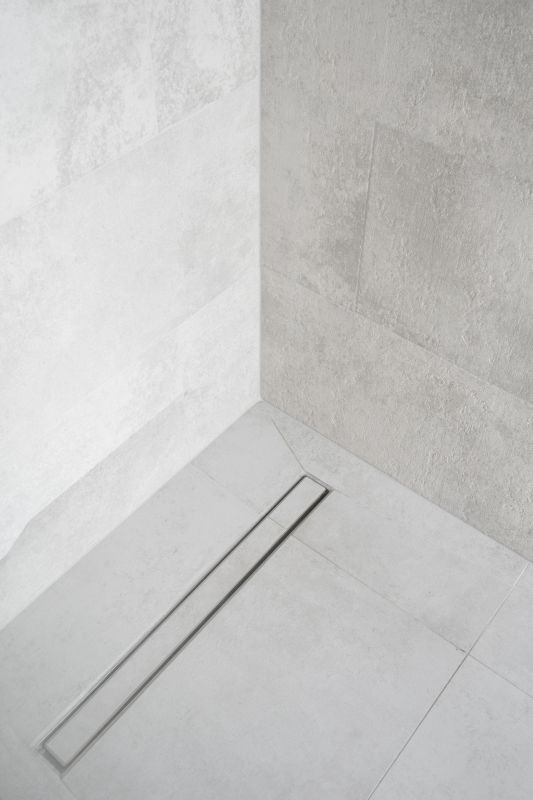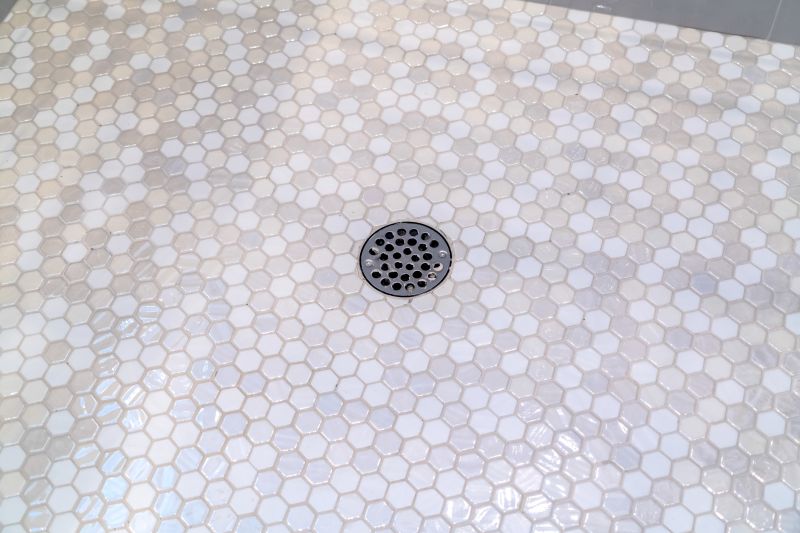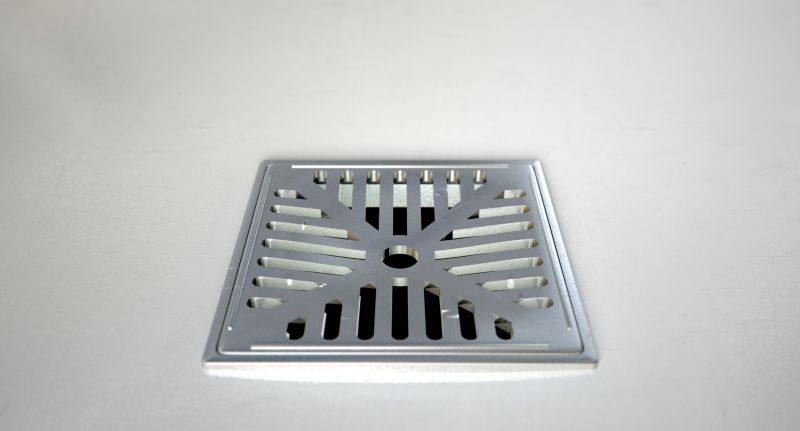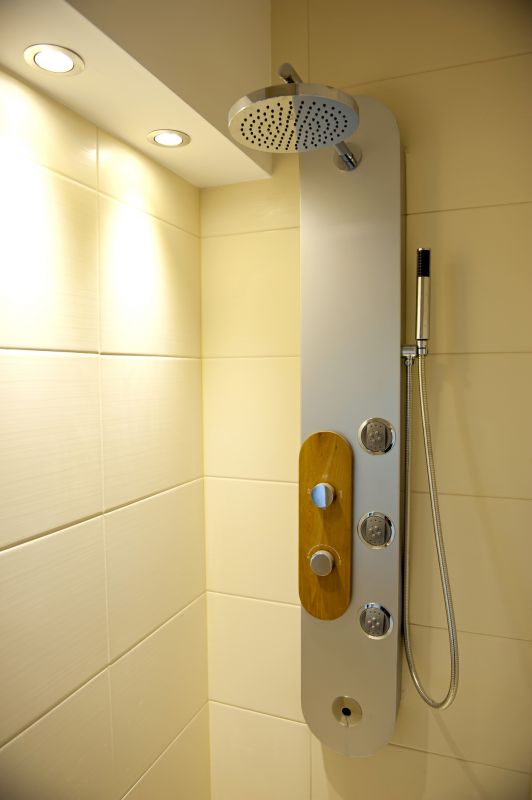Shower Drainage Options
Welcome to Aberdeen Showers
Shower Drainage Options

About Shower Drainage Options
Choosing the right shower drainage system is crucial for homeowners looking to enhance both the functionality and aesthetics of their bathroom. Various factors come into play when selecting a shower drain, including the type of shower, design preferences, and maintenance requirements. Understanding the different options available can help homeowners make informed decisions that align with their needs and bathroom style.
One of the primary considerations is the type of shower drain. Linear drains, point drains, and hidden drains are popular choices. Linear drains offer a sleek, modern look and are ideal for larger showers or those with a barrier-free design. Point drains are the traditional choice, commonly found in the center of the shower floor, and are suitable for smaller showers or those with a standard layout. Hidden drains, often integrated into the shower floor, provide a seamless appearance but may require more intricate installation.
Material selection is another critical aspect. Common materials for shower drains include stainless steel, brass, and plastic. Stainless steel is favored for its durability and resistance to corrosion, making it a long-lasting option. Brass offers a classic look and is also resistant to corrosion, while plastic is a budget-friendly choice that may not offer the same longevity as metal options.
Finishes play a significant role in the overall look of the shower drain. Homeowners can choose from polished, brushed, or matte finishes, each offering a distinct appearance. Polished finishes provide a shiny, reflective surface that can brighten up the space, while brushed finishes offer a more subdued, contemporary look. Matte finishes are increasingly popular for their understated elegance and ability to hide water spots and fingerprints.
Dimensions and compatibility with the existing plumbing system are essential considerations. The size of the drain must be appropriate for the shower floor and compatible with the plumbing to ensure efficient water drainage. Homeowners should verify the drain's dimensions and ensure it fits the shower's slope to prevent water pooling.
Maintenance expectations should also be considered when selecting a shower drain. Some drains come with removable grates or strainers that make cleaning easier by preventing hair and debris from clogging the pipes. Regular upkeep is necessary to maintain the drain's functionality and prevent blockages.
- Linear Drains
- Point Drains
- Hidden Drains
- Stainless Steel
- Brass
- Plastic
| Attribute | Options |
|---|---|
| Material | Stainless Steel, Brass, Plastic |
| Finish | Polished, Brushed, Matte |
| Dimensions | Varies by Type |
Linear Drain
Ideal for modern, barrier-free showers, offering a sleek and contemporary look.
Point Drain
Traditional choice, suitable for smaller showers with a central drainage point.
Hidden Drain
Provides a seamless appearance, often integrated into the shower floor design.
Understanding Different Shower Drainage Systems
Features, Materials, and Finishes for Optimal Performance
When designing or renovating a bathroom, selecting the right shower drainage system is crucial for both functionality and aesthetics. Homeowners have a variety of options to consider, each with unique attributes that can complement different bathroom styles and layouts. Understanding these options can help in making an informed decision that enhances the overall performance and appearance of the shower area.
Linear drains have gained popularity due to their sleek design and ability to accommodate large-format tiles, providing a seamless look. These drains are often made from stainless steel, ensuring durability and resistance to corrosion. They can be positioned at the entrance or along the wall of the shower, allowing for a single slope floor design, which is both practical and visually appealing.
Point drains, on the other hand, are the traditional choice found in many homes. Typically located at the center of the shower, they require a four-way slope for proper water drainage. Made from materials like brass or stainless steel, point drains come in various finishes such as chrome or brushed nickel, offering versatility to match different bathroom fixtures.
Tile Insert Drains
These drains allow for the shower floor tile to be inserted into the drain cover, creating a nearly invisible appearance. They are ideal for homeowners seeking a minimalist look.
Trench Drains
Perfect for larger showers, trench drains can handle a high volume of water flow. They are often installed along the shower's perimeter and can be customized in length to fit specific dimensions.
Hidden Drains
These systems are designed to be out of sight, using a concealed channel to direct water away. They offer a clean, unobtrusive look and are compatible with various shower layouts.
Material selection is a key consideration when choosing a shower drainage system. Stainless steel is favored for its strength and rust resistance, while brass offers a classic look with excellent durability. Finishes such as matte black or polished brass can add a touch of elegance and coordinate with other bathroom fixtures.
Upkeep expectations vary depending on the drainage system selected. Linear and tile insert drains may require periodic cleaning to prevent debris buildup, while point drains often need regular maintenance to ensure optimal water flow. Homeowners should consider their willingness to perform routine cleaning when selecting a drain type.
- Linear Drains: Sleek design, large-format tile compatibility
- Point Drains: Traditional, versatile finishes
- Tile Insert Drains: Minimalist, nearly invisible appearance
- Trench Drains: High water flow capacity, customizable length
- Hidden Drains: Concealed, unobtrusive design
| Attribute | Details |
|---|---|
| Material | Stainless Steel, Brass |
| Finish | Chrome, Brushed Nickel, Matte Black |
| Dimensions | Customizable Lengths |
Ultimately, the choice of shower drainage system should be guided by the specific needs of the bathroom space, personal style preferences, and maintenance considerations. By understanding the various options available, homeowners can select a drainage system that not only meets functional requirements but also enhances the aesthetic appeal of their bathroom.

Choosing the Right Shower Drainage: Sizing, Compatibility, and Maintenance
Key Criteria for Selecting and Maintaining Your Shower Drain
When designing or renovating a shower, one of the crucial components to consider is the drainage system. The right shower drainage ensures efficient water flow and prevents potential issues such as water pooling or leaks. Selecting the ideal drainage involves understanding various factors such as sizing, compatibility with your shower design, and maintenance requirements.
Shower drains come in a variety of sizes and configurations. The size of the drain should be compatible with the water output of your showerhead and the size of your shower area. Typically, larger showers require larger drains to accommodate the increased water flow. It's essential to measure the dimensions of your shower area accurately and choose a drain size that can handle the volume of water effectively.
Compatibility with the existing plumbing system is another critical consideration. Different drains are designed to fit specific pipe sizes and configurations. Ensuring that the drain you choose matches your plumbing setup can prevent installation issues and ensure optimal performance. Additionally, consider the type of shower base you have—whether it's tiled or prefabricated—as this can influence the type of drain that will work best.
Maintenance is an ongoing aspect of shower drainage that should not be overlooked. Drains can accumulate debris, hair, and soap scum over time, which can lead to clogs. Opting for a drain with an easy-to-remove grate or trap can simplify cleaning and maintenance tasks. Regularly inspecting and cleaning the drain can prolong its lifespan and maintain efficient water flow.
Linear Drains
Ideal for contemporary designs, offering a sleek look and efficient water drainage across a larger area.
Point Drains
Common in traditional setups, these drains are centered in the shower floor and require a sloped floor for optimal function.
Tileable Drains
These drains allow for tile inlay on the cover, providing a seamless look with the surrounding shower floor.
| Attribute | Details |
|---|---|
| Material | Stainless Steel, Brass, PVC |
| Finish | Polished, Brushed, Matte |
| Dimensions | Varies by design, typically 2-4 inches for point drains, 24-60 inches for linear drains |
When it comes to features and options, homeowners can choose from various materials and finishes to match their bathroom aesthetics. Stainless steel and brass are popular for their durability and resistance to corrosion, while PVC offers a lightweight and cost-effective alternative. Finishes such as polished, brushed, or matte can complement other bathroom fixtures and contribute to the overall design theme.
- Material: Stainless Steel, Brass, PVC
- Finish: Polished, Brushed, Matte
- Dimensions: Varies by design
- Grate Style: Removable or Fixed
Ultimately, choosing the right shower drainage involves balancing aesthetic preferences with practical considerations such as sizing, compatibility, and maintenance. By carefully evaluating these factors, homeowners can ensure a functional and visually appealing shower space.






